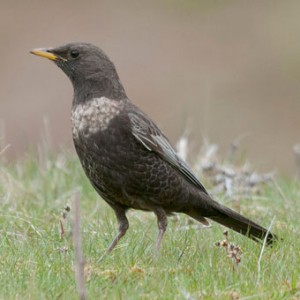 PEOPLE who shoot in the North West of England have an opportunity to help tackle a population crisis involving a declining migratory bird which favours upland areas.
PEOPLE who shoot in the North West of England have an opportunity to help tackle a population crisis involving a declining migratory bird which favours upland areas.
Ring Ouzels have suffered a 44 per cent decline in population since 1968, which experts say is due to climate change and low survival rates*. They are classified as ‘red-listed’ by the British Trust for Ornithology (BTO).
Shooters are being asked to report any sightings by recording the date, the number of birds, the coordinates of the sighting, and if possible, the number of males and females.
Ring Ouzels inhabit wild upland areas primarily through north Wales, northern England and Scotland. However, they can be found across the country between March and May and from September to November when migrating.
Ian Danby, BASC’s head of biodiversity projects, said: “It’s imperative we gather more information about Ring Ouzels, for instance in the Forest of Bowland, which is a key population area. This gives clearer knowledge of their local range and numbers as a precursor to any additional conservation action.
“These birds are well suited to life on the moors, especially if looked after in a similar way to how grouse are managed.”
Ring Ouzels have certain distinguishing features but can be mistaken for blackbirds. Males have large white chest crescents. Younger or female birds have pale edged feathers on their flank and under-tail. All members of the species also have pale edged feathers on their wings, most notable when closed.
Records can be added by members through the ‘Seen It’ section of Green Shoots Mapping using their login details at https://greenshoots.0ld.basc.org.uk.
Other members and non-members wishing to report sightings can email BASC’s acting regional director northern England Duncan Thomas at Duncan.Thomas@0ld.basc.org.uk using a simple reporting form. More information on Ring Ouzels can be found along with the form for reporting a sighting at http://0ld.basc.org.uk/conservation/green-shoots/ringouzel/
*Source: BTO Bird Atlas 2007-2011